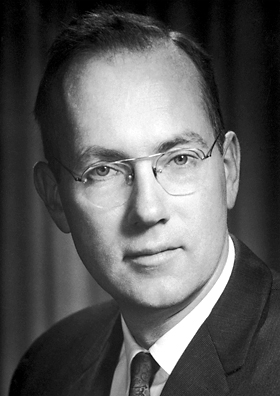Nobel laureate Charles Townes, who was awarded the prestigious science award in 1964 for the invention of lasers has died at the age of 99, according to The Guardian report.
As one of the most important physicist of the century, Townes, came up with the idea of using a beam of short wavelength, high frequency light while he sat on a Washington DC park bench in the spring of 1951.
 |
|
Nobel Laureate of Physics Charles Townes when he received the award in 1964. (Photo Courtesy of Nobel Prize) |
This led Townes and his students to build a microwave amplification device, named the maser in 1954. Microwaves were amplified to stimulate the emission of radiation, and the project at the time was part of U.S. Navy efforts to enhance communications using microwaves, reported The Scientist.
Four years later, Townes and his brother-in-law, Arthur Schawlow, applied the same design concept to ambplify a beam of optical light. The new invention was patented by Townes employer at the time Bell Laboratories to become what is now known as the laser.
He joined Bell Laboratories in 1939 after earning a doctorate in physics from Caltech. Some of his inventions at Bell Labs include radar bombing and communications systems used in World War II, before he left to become executive director of Colombia’s University Radiation Laboratory in 1948, noted The Scientist.
However, the first actual laser was not demonstrated till 1960 by another scientist, Theodore Maiman. Yet it was Townes, who shared the Nobel prize in physics for his work with two Russians, Aleksandr Prokhorov and Nicolai Basov, who also independently came up with the idea for a maser.
Townes pioneered the use of masers and lasers in astronomy, and with the aid of colleagues was the first to detect complex molecules in interstellar space, and the pioneer in measuring mass of the giant black hole at the center of the Milky Way galaxy.
Some of the laser-based infrared telescopes he built at the Mount Wilson observatory outside Los Angeles can even measure the diameter of distant stars.












